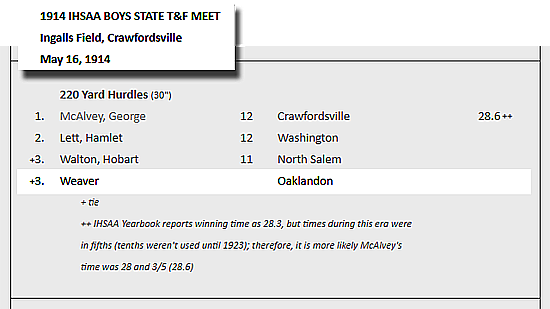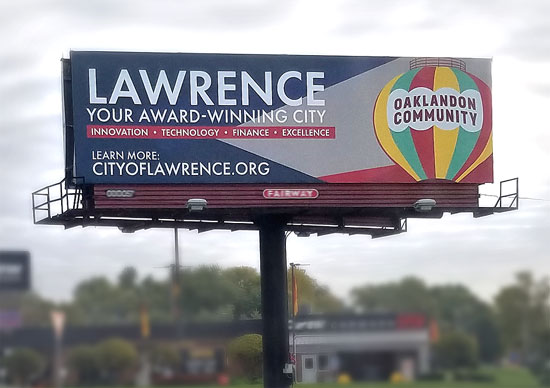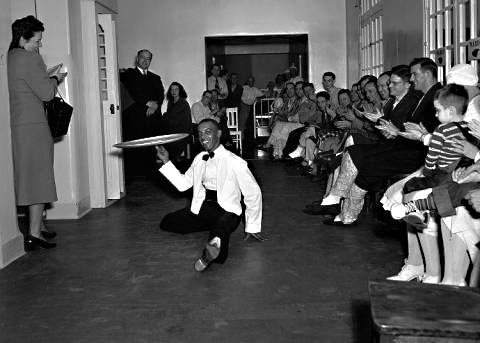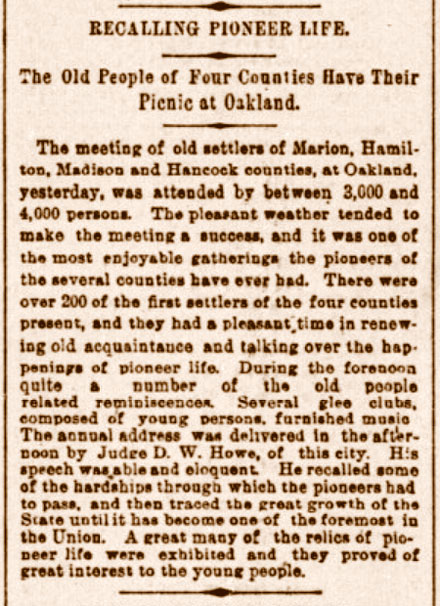Who's Online
User Functions
Welcome to Oaklandon, Anonymous Tuesday, January 20 2026 @ 08:26 pm EST
Blade Runner

- Wednesday, August 04 2021 @ 03:21 am EDT
-
- Contributed by:
- Mike
-
- Views:
- 2,455
Transporting Windmill Blades via railroad car sure makes for an awesome sight. After watching 15 or 20 of these things go by I finally decided to get out the cell phone and record this event. Great entertainment for those fortunate enough to get stopped at the Oaklandon crossing this time!
- Trackbacks (0)
1914 IHSAA BOYS STATE T&F MEET

- Monday, April 19 2021 @ 07:03 am EDT
-
- Contributed by:
- Mike
-
- Views:
- 10,869
Dear Readers,
I received the following inquiry over on our facebook page from one, Mike Slaubaugh. It is reprinted here with his permission in an effort to help locate a lost bit of Oaklandon related information:
Being from over 100 years ago, this is likely lost to history, but worth a try here. I am the webmaster of a site devoted to the history of the Indiana State High School Track & Field Champions. I am currently trying to track down the year of graduation for all medalists from 1904 to present. However, I have reached a dead end with the only medalist from Oaklandon HS:
Weaver (first name unknown), 3rd in the hurdles at the state meet held on May 16, 1914
A search of online yearbooks and newspaper archives have not yielded Weaver's first name or year of graduation (he may or may not have been a senior the year he medaled).
Any help with that information for Weaver is appreciated!
If you can shed any light on this mystery please visit Mr. Slaubaugh's very interesting website: https://users.pfw.edu/slaubau/instatemeethistory.htm you may contact him via the email provided there.
- Trackbacks (0)
The Curse of Oaklandon

- Monday, August 24 2020 @ 10:12 am EDT
-
- Contributed by:
- Mike
-
- Views:
- 3,959
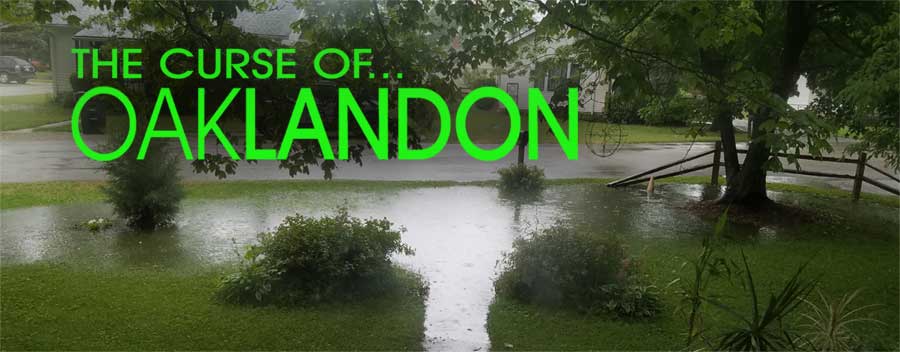
ÂÂÂ
I have been enjoying the uncovering of information about the town of Oaklandon for several years now. Little did I know that a deep, dark mystery was lurking just below the surface of my little parcel of Earth here on the outskirts of Paradise (Camp Paradise that is.)
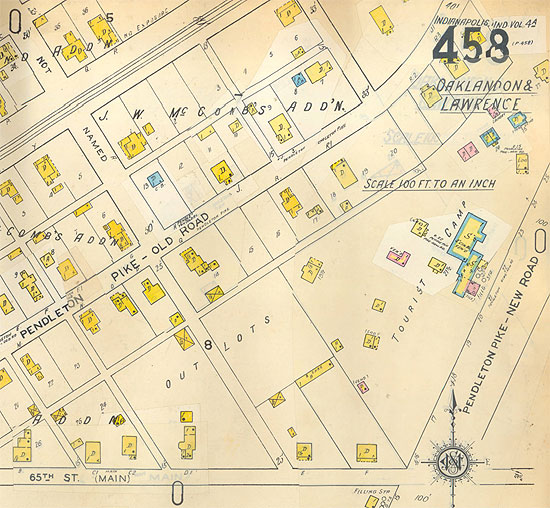
I enjoy lake-front property - I presume - as much as the next guy; in fact, on one rainy morning I awoke to discover my front yard had transitiond into a pond and I had to wonder if the addition of Koi might not enhance this new feature.
- Comment (0)
- Trackbacks (0)
A Good Sign for Oaklandon

- Friday, December 06 2019 @ 05:55 am EST
-
- Contributed by:
- Mike
-
- Views:
- 4,641
- Comment (0)
- Trackbacks (0)
Touring the Streets of Oaklandon - AGAIN!

- Monday, December 17 2018 @ 01:27 pm EST
-
- Contributed by:
- Mike
-
- Views:
- 2,784
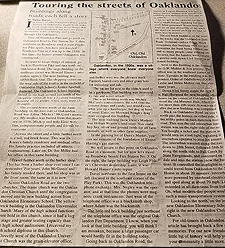 After posting an announcement on the Nextdoor website about the existence of this humble website, I was very pleased with the interest and overall positive response by many of my neighbors (who are also users of that system.) Among the many comments received was one from Nancy Hannet which offered the source photo for the image to the left and the words "An older gentleman who lived in Oaklandon all his life gave me this paper."
After posting an announcement on the Nextdoor website about the existence of this humble website, I was very pleased with the interest and overall positive response by many of my neighbors (who are also users of that system.) Among the many comments received was one from Nancy Hannet which offered the source photo for the image to the left and the words "An older gentleman who lived in Oaklandon all his life gave me this paper."I could only make-out the title and the fact that there was a map so I reached out to Nancy to discover the author's name and any other clues that might lead me to a copy I could examine. Knowing only the name Victor Harris and guessing it to be an article from the (now defunct) Lawrence Topics Newspaper this article proved to be very rare indeed.
Through Nancy's neighborly generosity, I was able to scan her xerox document and thereby present the article once more to the public, in an effort to assist the late Mr. Harris in his stated purpose for writing this historical thumbnail sketch of Oaklandon.
The available copy of this article unfortunately had the right-most edge clipped in the duplication process so I have been forced to reconstruct these lines based on the available context. In the transcript that follows these edits have been placed within square brackets ("[" & "]") so the reader may decide if this effort was successful or not.
East Lawrence
Touring the Streets of Oaklandon
Buildings along roads each tell a story
By Victor Harris
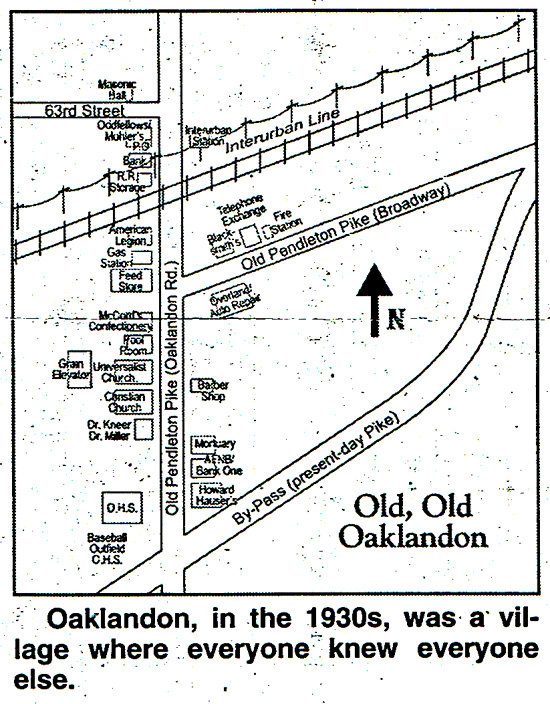
In honor of Old Oaklandon Days, a little history of Oaklandon might be in order. I can write only about those things that I know about firsthand, but here are some memories, a bit of history and a tour through Old Oaklandon.
Turn off Pendleton Pike and go north on Oaklandon Road to Fire Station No. 3, then northeast on Broadway until it joins Pendleton Pike again. You have just traveled Pendleton Pike as it was up to the 1930s, At that time, the bypass around Oaklandon was constructed.
In order to locate things of interest, go back to Pendleton Pike and turn north on Oaklandon Road. The large building on the northeast corner was Howard Hauser's automobile agency. The next building was AFNB/Bank One. The shopping center on the west side of the road is in the outfield of Oaklandon High School's former baseball diamond. The Oaklandon School building stood on the high ground just north of the shopping center. It was a 2 1/2-story building housing all 12 grades. Class sizes were 15 - 20 pupils.
The second house north of the bank building on the east side of Oaklandon Road was Erbin "Mickey" McCord's mortuary. My mother was buried from this mortuary in 1956. Mickey and wife Elsie were fine, compassionate people and friends to everyone.
Across the street and a little further north is a tall, red brick house. This was Dr. Kneer's family residence and medical office. His family practice included all athletics examinations. Later on, Dr. Joe Miller had his office in this same building.
Travel further north to the barber shop. This has been a barbershop ever since I can remember. For years, John McGinnis and his family resided there, and his shop was in the front room, same as it is now.
Across Oaklandon Road are the two churches. The frame church was the Oaklandon Christian Church until the congregation moved into its new building across from Oaklandon Elementary School. The yellow brick building is the Oaklandon Universalist Church. Many of the high school functions were held in this church, since it had a larger stage and greater seating capacity than the high school auditorium. I received my high school diploma in this church.
Directly west of the Oaklandon Universalist Church was the grain-elevator office, and further west was the elevator itself. Farmers hauled corn and other grain here for unloading and sale.
The vacant lot next to the church used to be a poolroom. This building was destroyed by fire and never rebuilt.
The next building north was Mickey McCord's confectionery. He sold over-thecounter drugs and candy, and would even whip you up a hamburger, hot dog or bowl of soup. Later, on Maynard Bough's drug store occupied this building.
The next building (now Dave's Market) was Hobart Weaver's feed store. You could buy hay, straw and ground feeds for all farm animals, as well as other farm supplies.
In the parking lot of Dave's Market, you can see remains of the foundation of Everet Harting's gas station.
We will return to this point on Oaklandon Road in a moment, but for now let's travel up Broadway beside Fire Station No. 3. On the right, the large building was Leigh Fisher's Chevrolet dealership. Later, it was Howard Hauser's auto repair.
Travel northeast to the first house on the left (located in the southeast corner of the Play Park). This was the Oaklandon telephone exchange. Mrs. Negley was the operator, and at that time the phones were magnetic crank instruments. Just west of the telephone office was a blacksmith shop, where Adam was the blacksmith.
The little red brick building just northeast of the telephone office was the original Oaklandon Fire Department. I know, when you look at that little building, you will think I am mistaken, because a large passenger car would hardly fit in the building today.
Going back to Oaklandon Road, the American Legion Building was just [north of] where Dave's Market now stands. This building was destroyed by fire and [was never] rebuilt. As we get to the railroad, on the [left] was a small storage building for the [rail]road. Mail personnel would hang the [mail] bags on an arm alongside of the track [and] the mail car would pick up the bag [while the] train was in motion.
The red brick building on the [north side] of the tracks was the Oaklandon State Bank. Assistant cashier Edgar Mock remembers this building only too well. [He] remembers the bank being robbed one [day] and so many people came running [out with] firearms that the bandits were caught a quarter-mile down 63rd Street in an [abandoned] building.
Next to this building is the [foundation of] the O.W. Mohler & Son grocery. The [post] office was in the southeast corner of [the] store. Upstairs in the building was [the Independent] Order of Oddfellows (IOOF) [lodge.] Leslie and Helen Mohler ran this store [for] many years.
Down 63rd Street stands the new [Masonic] Hall. Between the new building [and the] house on the corner of Oaklandon [Road] stood the old Masonic Hall, which [endured] for more than 100 years. It was torn [down] after the new building was completed.
Back on Oaklandon Road, as you [travel] north past the houses on either side, [notice] the utility poles in each direction from [the] road. This was the old interurban line. [The] station was on the right side of [road.] You bought a ticket and the station [manager] would turn on a red light, signaling [the] interurban operator to stop for [passengers.] The interurban traveled along the [railway] down to 38th Street, followed 38th [Street] along the north side to Fall Creek by [the] State Fairgrounds, and continued on [Martindale] and into the station (now the bus [station]). It controlled the stoplights so [one] could travel from Oaklandon to the [State] House in about 20 minutes. Interurbans were powered by overhead electrical [lines] and sped along at about 70 mph. [Lines] extended in all directions from [Indianapolis.] Oh, what modern-day people would [give for] such a mass-transportation system!
Looking to the north, on the left is new Oaklandon Elementary School. On the right is the new Oaklandon Christian Church.
For old-timers in Oaklandon I [trust] this article has brought back a few [pleasant] memories. For our new friends, [maybe a] little bit of history will help you [appreciate] your community a little more.
ÂÂÂ
- Comment (0)
- Trackbacks (0)
The Dancing Waiter at Sanitorium

- Friday, December 14 2018 @ 09:01 am EST
-
- Contributed by:
- Mike
-
- Views:
- 9,943
George Gibson, "the Dancing Waiter" entertains patients at the Sunnyside Tuberculosis Sanitorium, also called the Marion County Tuberculosis Hospital. The sanitorium was located on Route 12 (now 36) northeast of Indianapolis in an area called Oaklandon. Though tuberculosis had previously been treatable only through surgery, the antibiotic streptomycin became available in 1946. Gibson performed in the United States and Europe for decades, and appeared on the Ed Sullivan Show, the Milton Berle Show, and more.
Source: Larry Foster Collection | Indiana Historical Society [03/15/1948]
Highest Resolution Archive Image
ÂÂÂ
- Trackbacks (0)
Excerpt: History of Indianapolis and Marion County

- Thursday, December 13 2018 @ 03:56 am EST
-
- Contributed by:
- Mike
-
- Views:
- 3,529
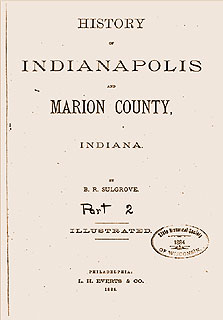 History of Indianapolis and Marion County, Indiana,
History of Indianapolis and Marion County, Indiana,Part 2
By Berry Robinson Sulgrove
L.H. Everts & Company, 1884 - Indianapolis
A detailed history of Indianapolis and Marion County, Indiana, from its settlement in the early 19th century. Covers general history, political history, business and industrial interests, social history, architecture and the history of each township within Marion County.
The following is an excerpt giving an overview of Oakland in 1884:
The village of Oakland is situated thirteen miles from Indianapolis, on the Bee-Line Railroad. It was laid out June 18. 1849, by John Emery. The name Oakland was suggeted by Dr. Moore. The streets have never been improved and many of the houses are in a dilapidated condition, and the village presents the appearance of age and decay. Subsequent to 1849 John Mock, Andrew F. Cory, John W. Combs, and Enoch Hanna laid out additions. The first merchants were the firm of John W. & William Combs; the first practicing physician was James W. Hervey. The town has a population of about two hundred, and has a telephonic connection and a Western Union Telegraph office. The railroad company recently completed a commodious depot, which adds greatly to the comfort of the traveling public. The present merchants are David G. Hanna and Naaman C. Plummer, both of whom are dealers in general merchandise. Andrew F. Cory and Jeff. K. Heltman are the physicians, and Naaman C. Plummer is the postmaster. The name of the postoffce is Oaklandon. The town has three churches, a Methodist, a Christian, and a Universalist. The last two named have a large membership and are well attended. The first named, however, is in a precarious condition. The village contains a graded school, and the Masons, Odd-Fellows, and Grangers have lodges located there.
- Comment (0)
- Trackbacks (0)
Old Times

- Friday, December 07 2018 @ 08:11 am EST
-
- Contributed by:
- Mike
-
- Views:
- 3,266
Indianapolis, Marion County, 3 August 1878
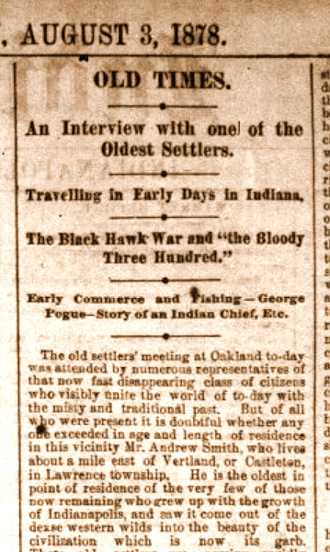
Click image below for full size image
(Transcript Below.)
- Comment (0)
- Trackbacks (0)
RECALLING PIONEER LIFE.

- Friday, December 07 2018 @ 07:27 am EST
-
- Contributed by:
- Mike
-
- Views:
- 1,708
- Comment (0)
- Trackbacks (0)
Old Oakland Anew!

- Thursday, December 06 2018 @ 06:05 am EST
-
- Contributed by:
- Mike
-
- Views:
- 1,456
While looking for historical information regarding Old Oakland Golf Course I happened upon the following video that highlights many of the recent improvements made to the grounds. We've seen the heavy equipment there, now we know what they were up to.
Published to YouTube on Jul 16, 2018 by Williams Creek Management
Aerial footage and time elapsed video of Williams Creek Management restoring Old Oakland Golf Course in Indianapolis, IN.
- Comment (0)
- Trackbacks (0)



